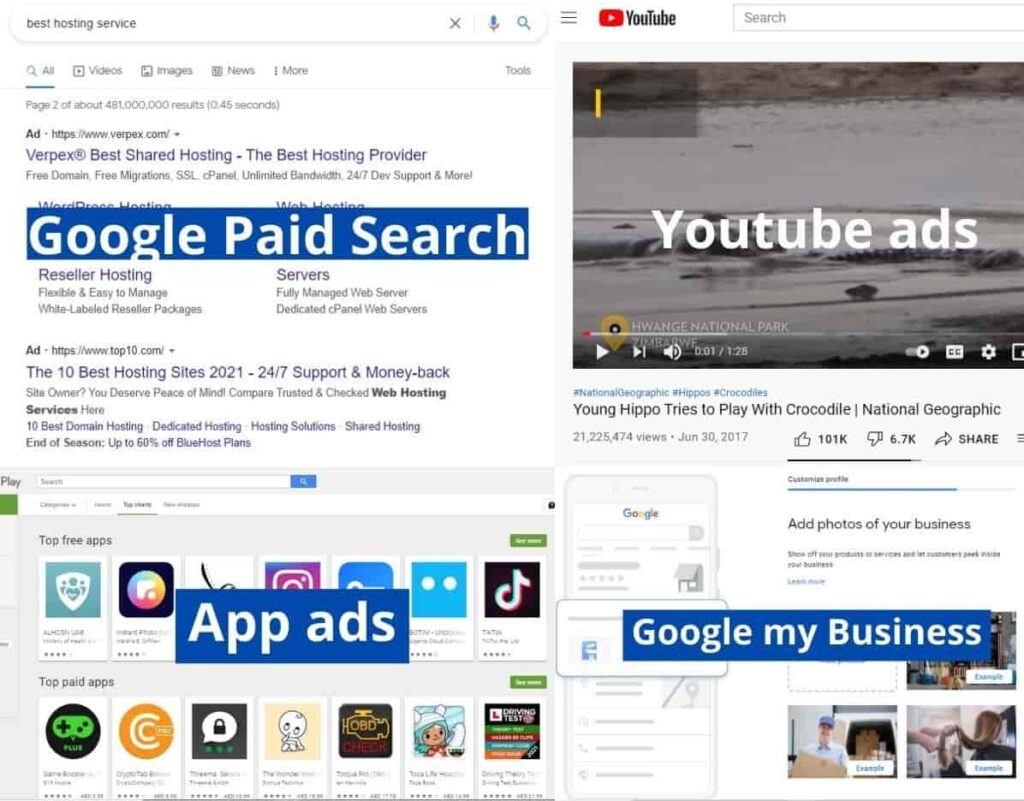Google Ads vs. PPC vs. Paid Search (Main Differences)

Are you someone who wishes to invest in online marketing? Do you wonder how to take your website to the next level and start earning?
Well, then it’s time to start investing in Google ads. Often people get confused between what are Google ads, PPC, and Paid search. People are talking about this all over the internet, but not everyone has a clear vision of its differences.
That’s precisely what we’re going to discuss in this blog post! Here we will give you a vivid idea about each one of them, so you know what you’re planning to invest into!
Let’s quickly dive into this!
What are Google Ads?
The term Google Ad is relatively new. And that reflects the advertising capabilities that Google offers over a vast space like Google partner sites, apps, and other properties.
People search for several services online on the Search Tab, Google Maps, download apps, watch YouTube videos, and much more.

These ads help businesses and marketers reach out to the people who are browsing through these platforms all across the web.
To make it clear, Google ads help people from all sectors reach out to their target customers and assist businesses of all sizes, from startups to large multinational companies.
What is Pay Per Click or PPC?
Now, that you know about Google Ads and its uses, let’s check out one of the most popular options – PPC.
PPC stands for pay-per-click. It is an advertising solution for search engines like Google, Bing, Yahoo and social media platforms Facebook and Instagram.
PPC advertising means you’re supposed to pay only when a user is clicking on the ad. Once the user clicks on that, the individual will be taken to your website.
In this way, you can target a vast audience making sure your product reaches thousands of people without spending money on impressions (which means if somebody sees your ad but doesn’t click, you won’t be charged).
For small companies who are not able to work on their brand awareness and experience promotional drawbacks like low rates of conversion can utilize PPC advertising.
What is Paid Search?
People frequently confuse themselves with Paid search and PPC. Well, to be clear, they do have a similarity, but they have distinct differences.
A paid search is an ad that comes up on all SERPS (Search Engine Results Pages) such as Google, Bing and many more. All PPC are not paid searches. However, all paid searches are PPCs.
Google Ads vs. PPC vs. Paid Search
Google ads is an advertising platform that Google offers where businesses can display the products or services they offer.
But PPC or pay-per-click advertisement method that Google offers covers only one area of advertisement, not considering impression and view-based advertisements.
A paid search is typically something that comes up on Google, Bing search results page.
Paid search can be shown on the SERPs in three types – ads with pictures known as shopping ads, product listing ads and text ads. You will find some product listing ads on the left side of Google as well.
Some of the Frequently Asked Questions (FAQs)
Now that you have an idea about the differences between the three, we thought of answering a few questions that you might have on your mind. Let us check them out below:
1. Which is better Google ads or PPC?
PPC is one of the ways to advertise Google ads offers. So, Google ads covers a broader area and PPC is one solution Google ads offers.
2. Is Google ads a Paid search?
Yes, Google ads is considered a paid search that you see on top of the search results page separated from organic search results.
Conclusion
Now that you know about Google ads vs. PPC vs. paid search, there should be no way any of these terms confuse you.
All of those are important if you want to reach your customers in some way.
So, go ahead and put your ads in front of your ideal customers and get your business to the next level.
If you need any help in running your Google ads, you can reach me out through the Contact page…

